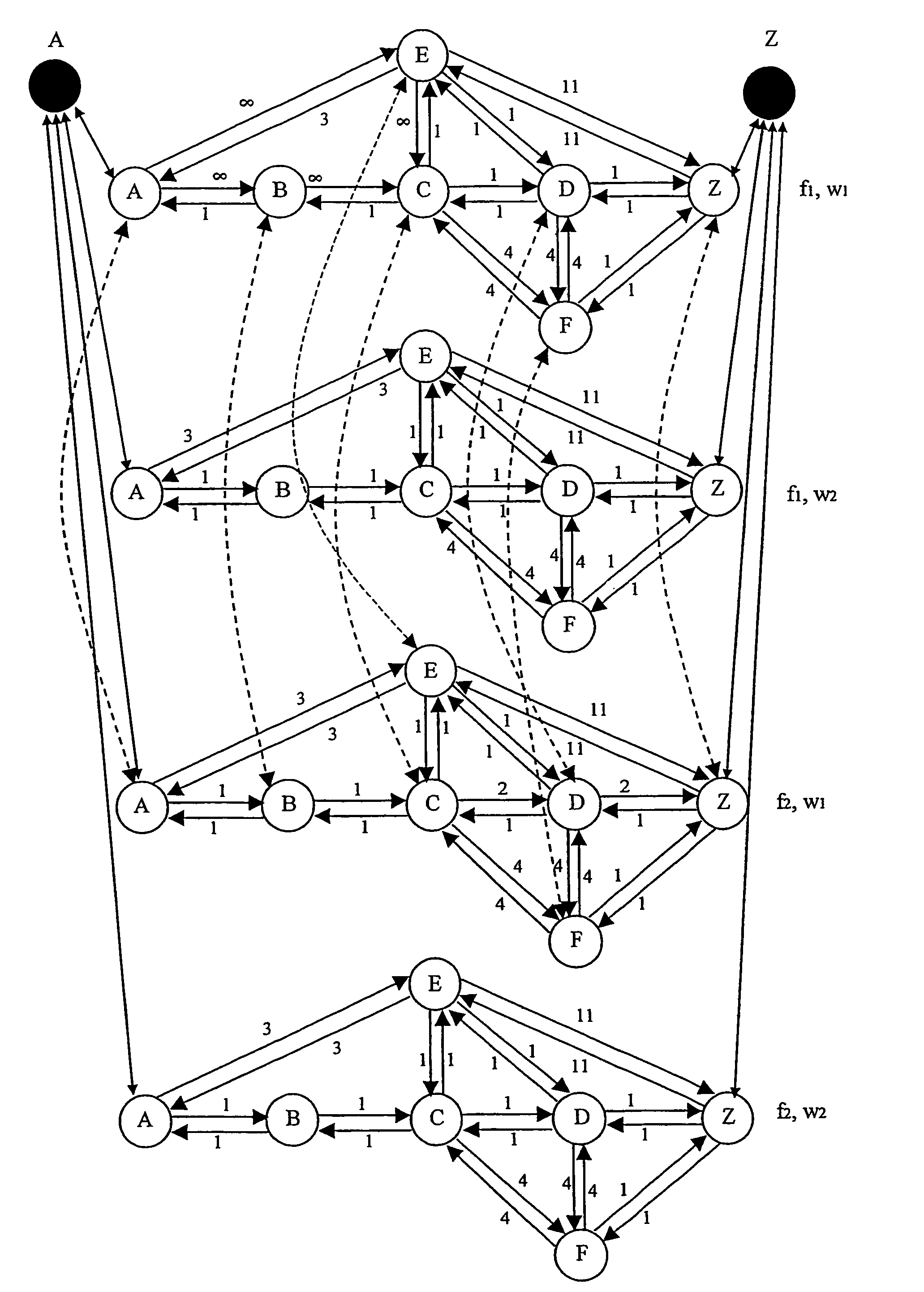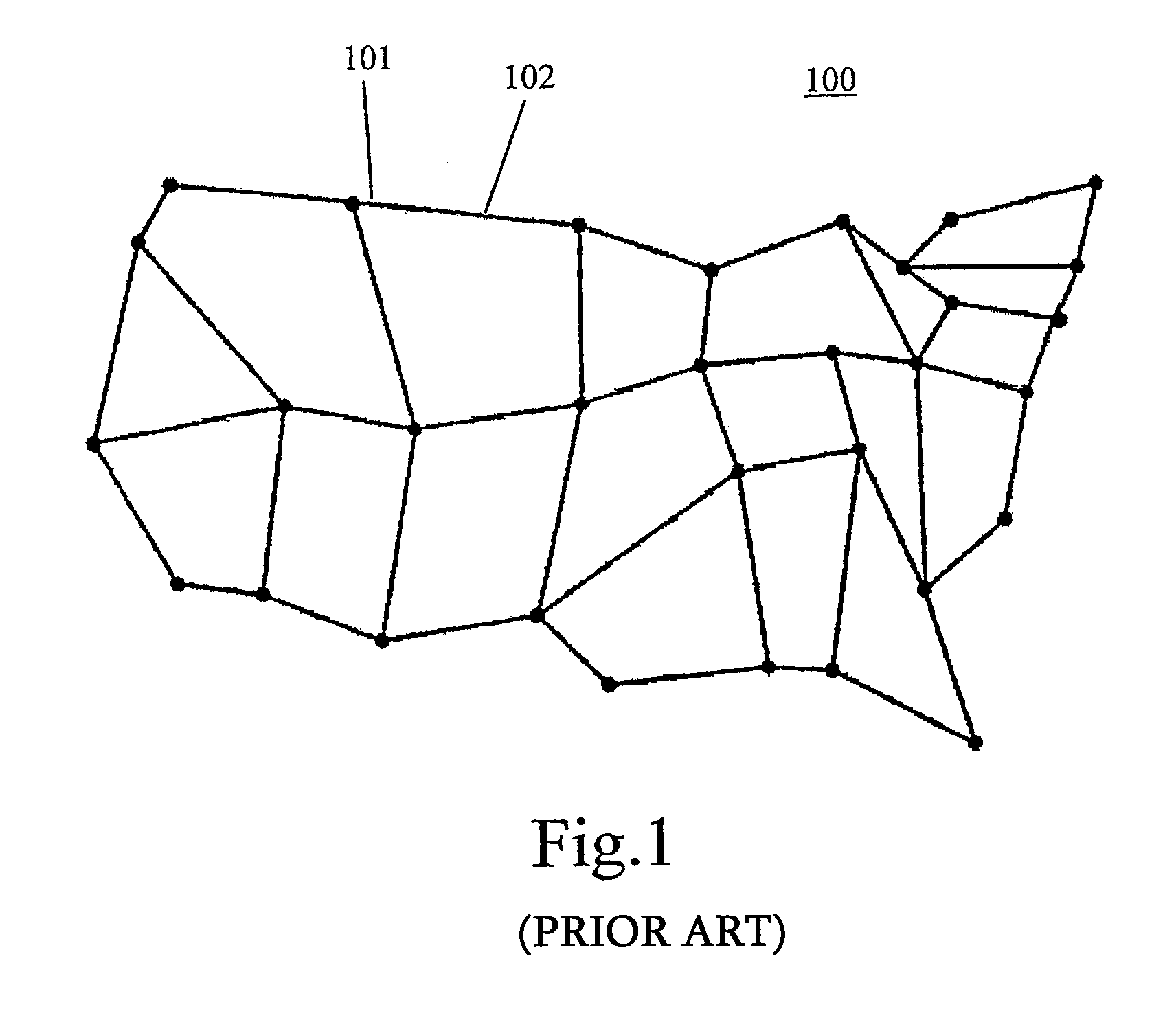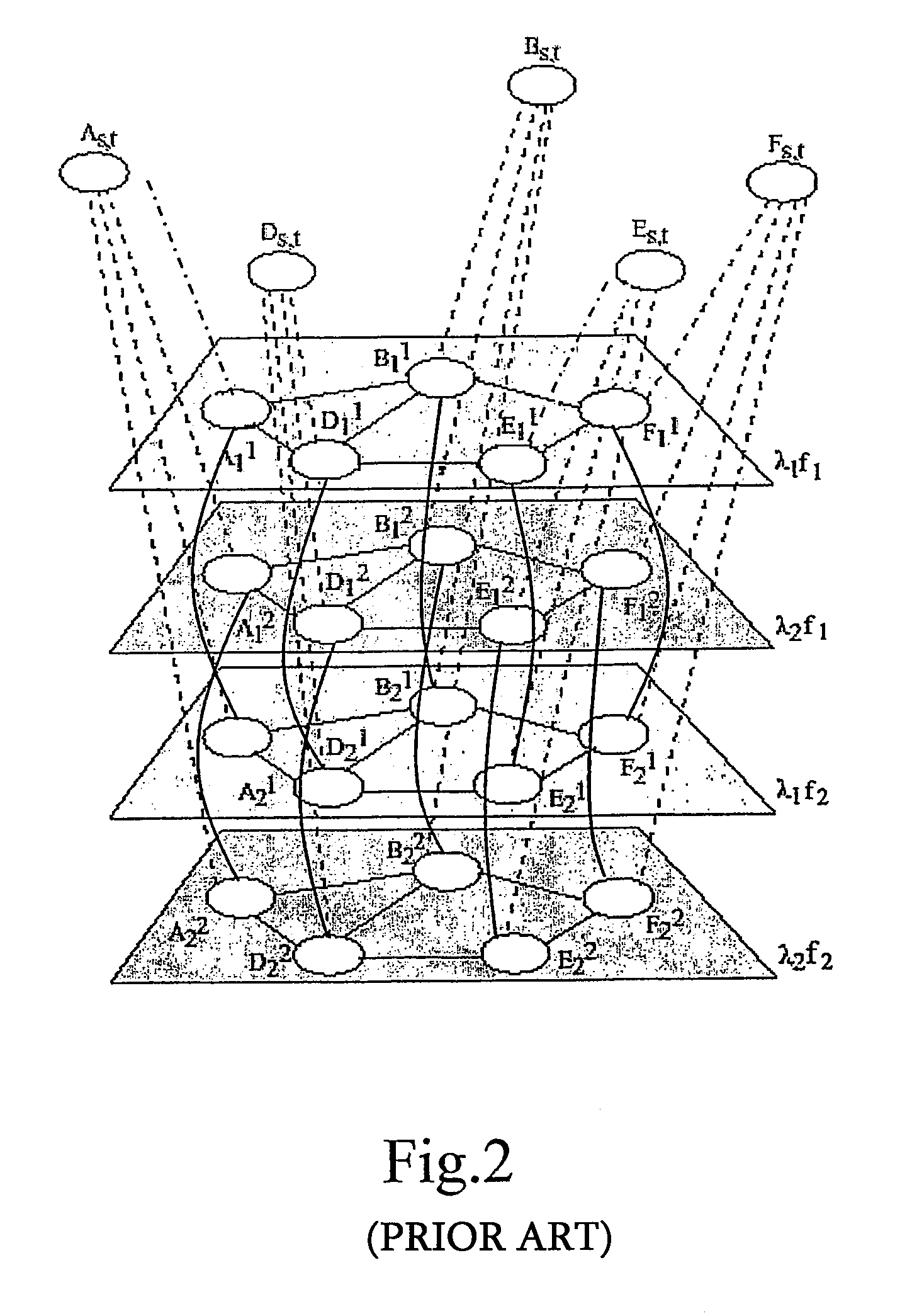Method for planning or provisioning data transport networks
a data transport network and data technology, applied in the direction of transmission monitoring, frequency-division multiplex, instruments, etc., can solve the problems of large dependence on the complexity of the rfwa function, complex and time-consuming algorithms, and the disclosure of tools that do not provide protection lightpaths
- Summary
- Abstract
- Description
- Claims
- Application Information
AI Technical Summary
Problems solved by technology
Method used
Image
Examples
case 1
work—Edge-disjoint
[0086]In a WP network the nodes have not wavelength conversion capability. Thus, each lightpath (working or spare) associated to a connection request uses at most one wavelength. The working lightpath can use a different wavelength with respect to the spare lightpath (wavelength agility). Alternatively, the working and the spare lightpath can use the same, wavelength.
[0087]FIG. 6a shows the layered graph representing the network of FIG. 5 in this case. The layered graph has four layers corresponding to the labeling pairs (f1,w1), (f1,w2), (f2,w1), (f2,w2). Bidirectional horizontal arcs between image nodes are reported in each layer, representing the links between the nodes of the network of FIG. 5. Bidirectional vertical arcs connect corresponding image nodes belonging to the layers labeled with the same wavelength and a different fiber, representing the capability of fiber switching in each node. For the sake of simplicity, in FIG. 6a only the vertical arcs connec...
case 2
twork—Edge-disjoint
[0109]In a VWP network all the nodes have wavelength conversion capability. Thus, each lightpath (working or spare) associated to a connection request may use more than one wavelength.
[0110]FIG. 7a shows the layered graph representing the network of FIG. 5 in this case. Differently for the WP case, bidirectional vertical arcs connect corresponding image nodes with each other in all the layers, representing both the possibility of wavelength conversion and of fiber switching in each node. For the sake of simplicity, in FIG. 7a only the vertical arcs connecting corresponding image nodes A and B have been shown. However, it has to be intended that similar arcs should connect with each other all the corresponding nodes in all the layers. “Oblique” arcs are still forbidden. For the sake of simplicity, add-drop function was shown in FIG. 7a only for the two source-destination image nodes A-Z. This has not to be intended as limiting the invention, in that any of the node...
case 3
etwork—Edge-disjoint
[0125]In a PVWP network only some of the nodes have wavelength conversion capability. Thus, a lightpath (working or spare) associated to a connection request may use more than one wavelength.
[0126]FIG. 8a shows the layered graph representing the network of FIG. 5 in this case. For exemplary purposes, it is assumed that the two adjacent nodes C and D have wavelength conversion capability. These nodes have been highlighted with punctuation in FIG. 8a. Bidirectional vertical arcs have not been shown in FIG. 8a for simplicity. However, it has to be intended that bidirectional vertical arcs connect corresponding image nodes C and D with each other, respectively, in all the layers, representing both the possibility of wavelength conversion and of fiber switching. As far as the other nodes are concerned, bidirectional vertical arcs connect corresponding image nodes belonging to the layers labeled with the same wavelength and a different fiber, representing the capabilit...
PUM
 Login to View More
Login to View More Abstract
Description
Claims
Application Information
 Login to View More
Login to View More - R&D
- Intellectual Property
- Life Sciences
- Materials
- Tech Scout
- Unparalleled Data Quality
- Higher Quality Content
- 60% Fewer Hallucinations
Browse by: Latest US Patents, China's latest patents, Technical Efficacy Thesaurus, Application Domain, Technology Topic, Popular Technical Reports.
© 2025 PatSnap. All rights reserved.Legal|Privacy policy|Modern Slavery Act Transparency Statement|Sitemap|About US| Contact US: help@patsnap.com



